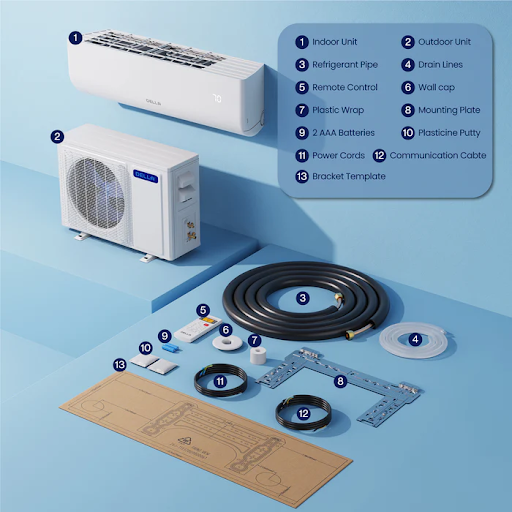Choosing the perfect cooling system for your home is more than just picking the first model you see on an air conditioner sale page. It requires thoughtful consideration of space size, energy efficiency, climate, and long-term use. Among the many options available, the split AC unit has become a popular choice for its flexibility, power, and aesthetic integration. But not all split systems are created equal, and finding the right one can make a significant difference in your comfort and energy bills.
In this article, we’ll walk you through everything you need to consider when selecting the right split AC unit for your home—from understanding the basics to evaluating room size, BTU capacity, installation logistics, and energy ratings.
Understanding the Basics of Split AC Units
A split AC unit consists of two main components: an indoor air-handling unit and an outdoor compressor/condenser. These two parts are connected by refrigerant pipes and electrical wiring. Unlike traditional window units or central air conditioning, split systems offer a quieter, more efficient, and often more aesthetically pleasing solution to home cooling.
One of the biggest advantages of split ACs is that they don’t require ductwork. This makes them ideal for older homes, additions, apartments, or any space where installing ducts would be costly or impractical.
There are two primary types of split AC systems:
- Single-zone split ACs, which serve one room or area
- Multi-zone systems, which can control the temperature in multiple rooms independently using separate indoor units
Understanding the difference between these types helps in selecting the system that best suits your home’s architecture and your lifestyle needs.
Assess Your Space and Cooling Requirements
Before browsing models, it’s essential to measure your space and determine how much cooling power you need. This is where BTU (British Thermal Unit) ratings come into play. The BTU rating tells you how much heat the unit can remove from a room in one hour.
Here’s a rough guide:
- 9,000 BTU: Rooms up to 400 sq. ft. (small bedrooms, home offices)
- 12,000 BTU: Rooms up to 550 sq. ft. (larger bedrooms, small living rooms)
- 18,000 BTU: Rooms up to 1,000 sq. ft. (open-plan areas, larger spaces)
- 24,000 BTU and above: Very large spaces, multi-room zones
However, square footage is just one part of the equation. Consider ceiling height, insulation quality, the number of windows, sunlight exposure, and even the number of people in the room, as all of these factors influence your actual cooling needs.
Single-Zone vs. Multi-Zone: Which One is Right?
Choosing between a single-zone and a multi-zone split AC unit depends largely on your home’s layout and your cooling preferences.
- A single-zone split AC is best when you want to cool just one specific room. These systems are easy to install, cost-effective, and energy-efficient when used properly.
- A multi-zone split system, on the other hand, is perfect for households with multiple rooms or floors that require independent climate control. For example, you might want to keep your living room cooler during the day and your bedrooms cooler at night. Multi-zone units provide this kind of flexibility with multiple indoor units connected to a single outdoor condenser.
Though multi-zone systems come with a higher upfront cost, they can significantly reduce energy waste and improve comfort across different parts of your home.
Energy Efficiency Matters
Energy efficiency should be a top priority when choosing any AC system. Look for units with high SEER (Seasonal Energy Efficiency Ratio) ratings. A higher SEER rating means better efficiency and lower electricity bills. In most regions, a SEER rating of at least 14 is recommended, but newer models often go as high as 20 or more.
Some split AC units also include inverter technology, which allows the compressor to adjust its speed rather than constantly turning on and off. This results in more stable temperatures, quieter operation, and greater energy savings over time.
When shopping, also look for Energy Star-certified models, as these meet strict guidelines set by the U.S. Environmental Protection Agency and Department of Energy for energy efficiency.
Consider Installation and Aesthetics
Split AC systems require professional installation, especially because they involve electrical wiring and refrigerant handling. However, installation is generally quicker and less invasive than ducted systems.
The indoor unit is typically mounted high on a wall, but there are also ceiling cassette and floor-mounted models available to suit different interior layouts. When choosing, think about both performance and aesthetics. Some homeowners prefer sleek, minimalist units that blend into modern interiors, while others prioritize function and airflow direction.
Outdoor units should be placed in a well-ventilated area and preferably out of direct sunlight to enhance performance and lifespan. Proper placement can reduce noise levels and improve efficiency.







